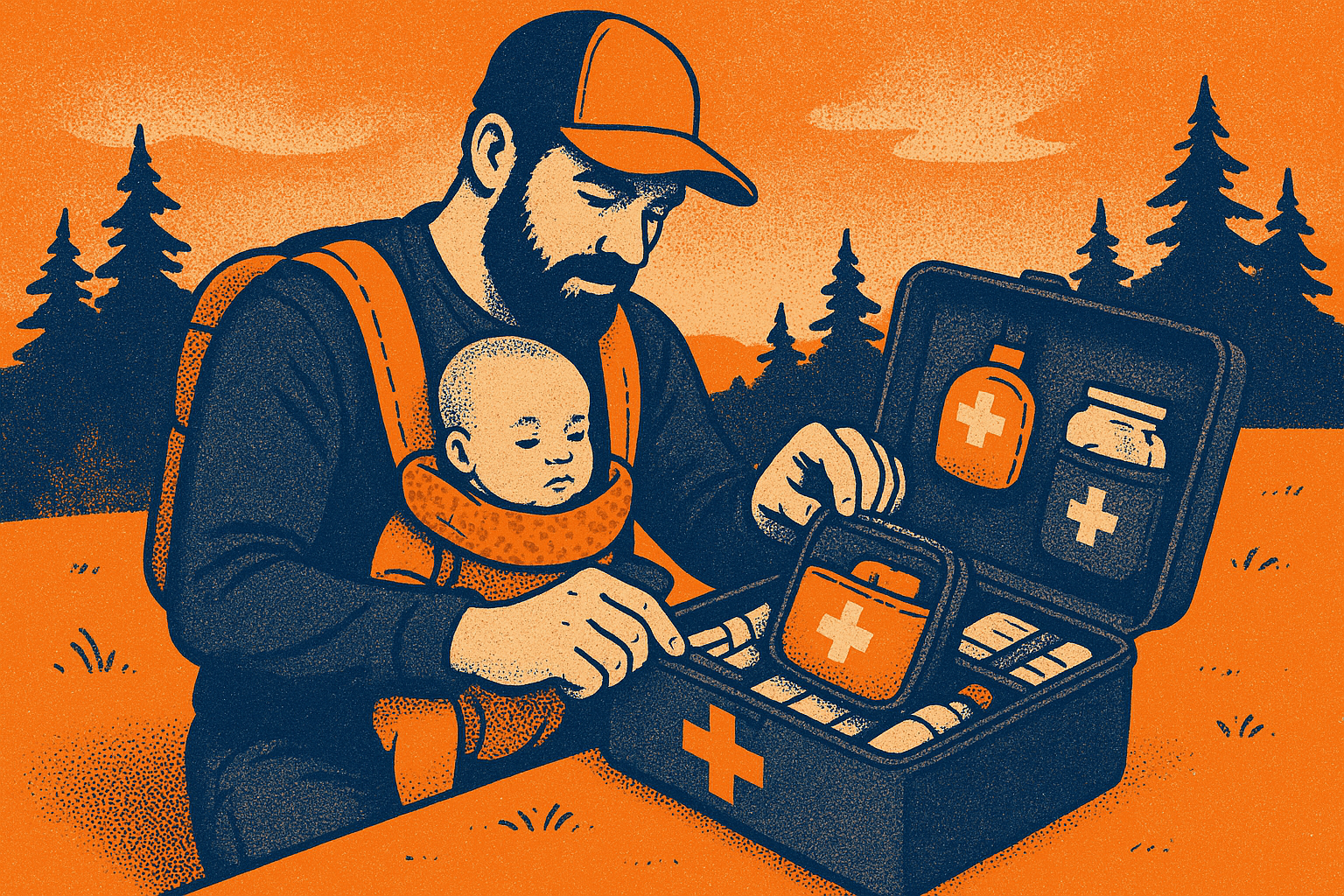Dad’s Complete Guide to the American Red Cross Store for Families
Written by: Bill Raymond

Dad’s Complete Guide to the American Red Cross Store for Families
Quick snapshot: What the American Red Cross Store is and who it’s for
The American Red Cross Store sells consumer first-aid kits, emergency kits, and practical preparedness gear for homes, cars, schools, and workplaces. For families, the main categories are first-aid kits, broader emergency kits (light, power, food/water basics), baby-friendly items, and pet preparedness gear. It’s built for everyday households, not hospitals.
Purchases support Red Cross programs, so your buy both equips your home and backs a trusted organization. Before you buy, confirm product contents and current policies (shipping, returns, warranties) on the store and FAQ pages—these details can change.
Next action: Visit the Red Cross Store, skim the family and first-aid categories, and note one kit that fits your household.
Best Red Cross kits for families with infants and young children
Red Cross family kits handle common injuries and short-term emergencies: cuts, scrapes, minor burns, and basic wound care. Emergency kits add light, power, and comfort items. For infants and toddlers, expect to add a few child-specific things—no consumer kit includes everything a baby might need.
Buy a solid family first-aid kit as your base, then fill infant/toddler gaps. Typical pediatric needs include diapers, wipes, feeding supplies, and medications with child-safe dosing guidance. Always check age labels and talk to your pediatrician about dosing and prescriptions.
A practical buy-and-add approach:
- Buy: a family first-aid kit sized to your household and a small emergency kit for light/power.
- Add for infants/toddlers (five must-haves): 1) Diapers and wipes (24–48 hours’ worth), 2) Formula or a plan for breast milk with clean bottles/nipples, 3) A digital thermometer suitable for children, 4) Pediatric pain/fever reducer per your clinician’s advice, 5) A spare pacifier and a small comfort item.
If your child has allergies or asthma, include prescribed devices (epinephrine auto-injector, inhaler) as directed. Store them labeled and check expirations.
Next action: Choose a family first-aid kit as your base and set aside a small bag for the five infant add-ons.
Choosing kit size and type for your household
Count people, consider ages, and add a buffer. For two adults and one baby, a family-sized first-aid kit plus a compact emergency kit works well. For larger households, size up or keep multiple kits so more than one caregiver can act at once.
Think locations, not just size. Keep a kit at home, a smaller kit in each car, and a mini set in the diaper bag or with the babysitter. Store the main kit where it’s visible, dry, and easy to reach—don’t bury it.
What a family first-aid kit should include (practical checklist)
Use this checklist to inspect any store kit and top it off for family life. Red Cross guidance and clinical lists agree on the basics: clean wounds, protect skin, control minor bleeding, reduce pain/fever as advised by a professional, and call for help when needed.
Core first-aid supplies (verify quantities and quality):
- Assorted adhesive bandages (small to large) and knuckle/fingertip styles
- Sterile gauze pads and rolled gauze
- Medical tape (hypoallergenic if needed)
- Antiseptic wipes and antibiotic ointment packets
- Burn gel or sterile burn dressing
- Tweezers and small scissors
- Disposable gloves (nitrile) in multiple sizes
- Elastic bandage (for light compression)
- Instant cold pack and a small heat pack
- CPR face shield or mask (adult; pediatric-size if available)
- Triangular bandage/sling
- Alcohol prep pads and cotton swabs
- A compact first-aid guide card
Health and family-care items to verify or add:
- Digital thermometer (child-friendly) with spare battery
- Hydrocortisone cream for minor itching (age-appropriate)
- Oral rehydration salts or electrolyte packets
- Pain/fever reducer for adults and pediatric formulas per clinician advice
- Allergy relief: non-drowsy antihistamine as recommended; prescribed auto-injector if applicable
- Saline nasal spray and a bulb or nasal aspirator for infants
- Instant glucose source (like glucose gel) if needed
- Emergency contact card with pediatrician and caregiver numbers
Infant/toddler add-ons (pack in a zip pouch):
- Diapers, wipes, diaper cream, small changing pad
- Formula and clean bottles/nipples or feeding supplies that match your routine
- Extra pacifier, soft blanket, and a small toy for comfort
- Baby nail clippers/emery board and a small comb/brush
- Child-safe sunscreen and insect repellent (age-appropriate; check labels)
Home emergency items that pair well with first aid:
- Flashlight or headlamp for hands-free care, with spare batteries
- Portable power bank and charging cable for your phone
- Emergency blanket and a small backup of water and shelf-stable snacks
- Small notebook and pen to record times, symptoms, or doses
Quick inspection tip: open the kit and scan for sealed sterile items, check bandage counts, and note missing basics like tape or gloves. Replace anything missing or expired.
Next action: Print or save this checklist, open your kit today, and add any missing infant or health items.
Device & medication notes: labeling and safety tips
Label medications and devices clearly: who it’s for, purpose, and expiration date. Keep pediatric dosing instructions with the medication—use the original box or tape a printed note inside the kit. For prescriptions, follow your provider’s directions.
Store thermometers, inhalers, and auto-injectors per manufacturer instructions. Keep them clean, dry, and within listed temperature ranges. Replace batteries on a schedule so devices work when you need them.
When in doubt about dosing, interactions, or storage, call your pediatrician or pharmacist. A quick call beats a risky guess.
Pets & preparedness: supplies and how to include pets in your kit
Pets are family too. Plan a pet mini-kit next to your family kit. Include: leash, harness, carrier, a few days of food and water, collapsible bowls, waste bags, a photo of your pet, vaccination/medical records, and any medications with dosing instructions from your vet.
If space is tight, keep pet supplies in a tote by the door. Label carriers with your name and phone number. Confirm pet-friendly shelters or friends who can host your animal during evacuations. Practice loading your pet into the carrier so it’s not a first-time struggle.
Next action: Build a labeled pet pouch with food, meds, records, and a leash, and store it beside your main kit.
Buying logistics: shipping, returns, warranties, and how shopping helps
Before checkout, review shipping options, the return process, and any warranty details on the product page or FAQ. Policies change—confirm the latest details at purchase. If an item arrives damaged or missing parts, contact customer support with photos and your order number.
Product pages usually list kit contents and show photos. Compare the contents to your needs (infant items, allergy gear, pet add-ons) so you know what else to buy. If two kits are similar, some families use the fact that purchases support Red Cross programs as a tie-breaker.
If you plan to gift a kit (new parents, grandparents), add a note reminding them to personalize it with child-specific items.
Next action: Read the product contents and the store FAQ before ordering so you know exactly what’s included and how returns work.
Maintain & rotate: quick schedule to keep your kit ready
A kit is only ready if it’s maintained. Set calendar reminders and label the kit lid: “Last checked: ___ / Next check: ___.”
Simple schedule:
- Monthly (1-minute visual): Open the kit, ensure contents are dry, sealed, and in place. Confirm flashlights work.
- Every 6 months: Replace perishables and check all expiration dates. Swap flashlight and detector batteries. Adjust seasonal items (sunscreen/bug spray in warm months; hand warmers and lip balm in cold months).
- Every 12 months: Full audit. Recount bandages and gauze. Replace worn tape and wraps. Update emergency contacts, pediatric dosing notes, and caregiver info. Confirm thermometers and devices work and replace batteries.
- After any use: Restock the same day. Note what you used on the kit log so you replace like-for-like.
Storage reminders: keep kits cool, dry, and easy to reach; avoid storing medications or devices long-term in hot car trunks. Ensure every caregiver knows where kits are and how to open them.
Next action: Put two reminders on your calendar now—one six months out and one 12 months out—to rotate and audit your kit.
Customize & compare: tailoring kits to your family and assessing value
Customize your kit for:
- Medications: adult and pediatric pain/fever reducers as advised; allergy meds; prescribed inhalers or auto-injectors.
- Allergies: add prescribed items and an action plan from your clinician.
- Infants: diapers, formula/feeding supplies, thermometer, comfort items.
- Mobility: instant cold/heat packs, extra elastic wraps, and any braces or aids you rely on.
- Eyes and contacts: spare lenses, case, solution, and backup glasses.
- Daily living: spare phone charger, small cash, and key copies.
When to choose a Red Cross kit versus DIY: buy a kit for a trusted baseline and top it off, or build your own if you prefer sourcing specifics. Many parents choose Red Cross kits for convenience, the guidance behind the contents, and because purchases support the mission.
Some people reference workplace first-aid standards (ANSI/ISEA minimums) to judge completeness. That standard is for workplaces, not homes—use it only as a rough benchmark and don’t assume a consumer kit meets workplace requirements.
Next action: Make a short add-on list (meds, infant needs, allergies, mobility) and include it with your shopping plan.
Cost & value: quick rules to compare store kits with retail options
Compare kits by contents first, not price. Check counts of key items, presence of sterile dressings, quality of tools (tweezers, shears), and whether health items you need are included.
Add “mission value” to your calculus. If two kits are similar and the Red Cross option supports programs you value, that can be the tie-breaker. For deep comparisons, check current independent reviews and always verify exact contents on the product page.
Pairing purchases with training and local Red Cross resources
Supplies plus skills is the win. A first-aid or CPR class gives you the confidence to use what’s in your kit. Schedule training for parents, grandparents, and babysitters so everyone knows the basics.
Search for local Red Cross classes and pick dates that fit your calendar. Many families buy a kit and then book a weekend class while motivation is high. That combo turns a box of supplies into real capability.
Suggested next steps: buy the kit that fits your family today, then register for a nearby first-aid/CPR class this month.
Notes & disclaimers
This guide is for informational and purchasing guidance only. It does not provide medical advice. For medical questions, prescriptions, or pediatric dosing, consult a licensed healthcare professional.
Product contents, inventory, pricing, and store policies (shipping, returns, warranties) can change. Always verify the product page and the store FAQ before you buy.
Next action: If you have medical questions, call your clinician; for purchase details, double-check the store listing and FAQ before checkout.
Ready to Transform your Business with Little Effort Using Vertical?
Bill Raymond
Bill is the voice behind Prepper Dad. A near 20-year National Guard veteran who has planned and executed domestic-response missions from hurricanes to cyber outages. Bill blends boots-on-the-ground experience with geospatial intelligence know-how to coach busy families toward calm, commonsense preparedness. When he’s not fine-tuning go-bags, he’s chasing adventures with his wife and kids around New England.

